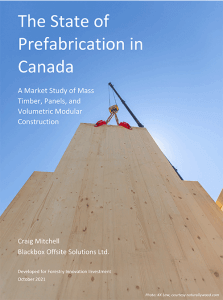The State of Prefabrication in Canada
Craig Mitchell, BlackBox Offsite Solutions

Canada has a long-standing history of using prefabricated construction methods. As early as 1905, B.C. Mills developed some of the first known prefabricated structures, which were shipped across Western Canada and used as banks and portable classrooms. With the growing need for affordable housing, the emphasis on sustainability and green buildings, and the supply and demand pressures in the construction industry, the push towards industrialization and prefabrication in Canada is becoming increasingly necessary. The recent government policies aimed at boosting economic recovery, such as infrastructure spending and expanded immigration, further escalate the demand for housing and construction.
Report Summary
The construction industry is known for being a laggard in terms of productivity. According to a report by McKinsey Global Institute, the sector’s labour productivity growth averaged just 1% per year over the past 20 years, compared to nearly 3% growth for the world economy and nearly 4% growth for the manufacturing sector. Canada is facing similar challenges, with construction employment expected to rise by almost 6% over the next decade. This is despite the need to replace nearly 260,000 workers, who are retiring, and the aging labour force in the construction industry. The industry is also facing low productivity, a lack of attractiveness as a career path, and a poor reputation.
To overcome these challenges, Canada must embrace innovation and look to construction technology and modern methods of construction (MMC) to solve the housing and construction crisis. Other countries, such as the UK, Japan, Sweden, Germany, and the Netherlands, have already embraced prefabrication technology and have seen success. In Canada, it is time to follow suit and embrace prefabrication as a solution to the housing and construction crisis.
This report aims to examine the status of the prefabrication market in Canada and explore the current market dynamics, drivers, and barriers to adoption that are present for mass timber, panelization, and modular construction. The report provides recommendations and challenges the government, stakeholders, and industry to commit to prefabrication and stimulate discussion on the more effective use of offsite construction. By doing so, Canada can overcome the challenges faced by the construction industry, such as low productivity, an aging labour force, and a lack of affordable housing, and secure a better future for the country.
In conclusion, the adoption of prefabrication technology and MMC in Canada is necessary to overcome the challenges faced by the construction industry and secure a better future for the country. The government, stakeholders, and industry must commit to prefabrication and stimulate discussion on the more effective use of offsite construction to ensure that Canada can continue to grow and develop while addressing the critical issues facing the construction industry.
2026 Events to be Announced Soon!
Join the leading companies and professionals from across the offsite construction industry at each of this year's Offsite Construction Network events. With summits and expos taking place across North America in 2026, it's never been easier to connect with and learn from offsite construction manufacturers, designers, builders, and suppliers from the United States and Canada.
Subscribe today to get the latest updates on future events from the Offsite Construction Network.
